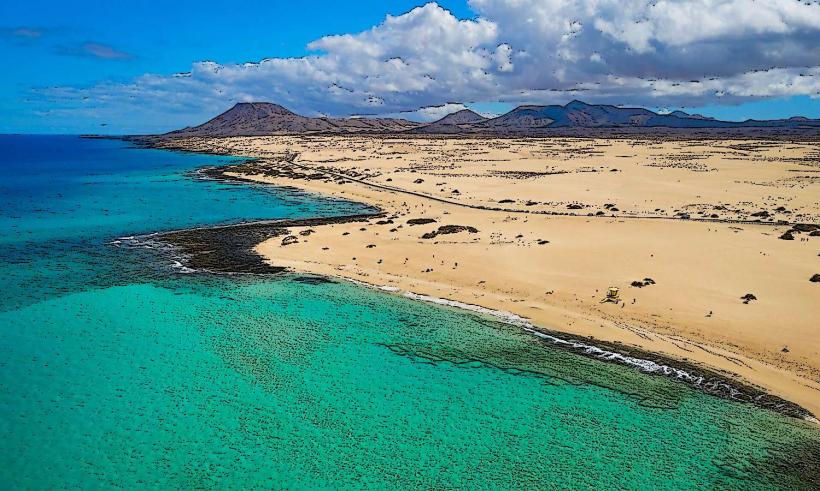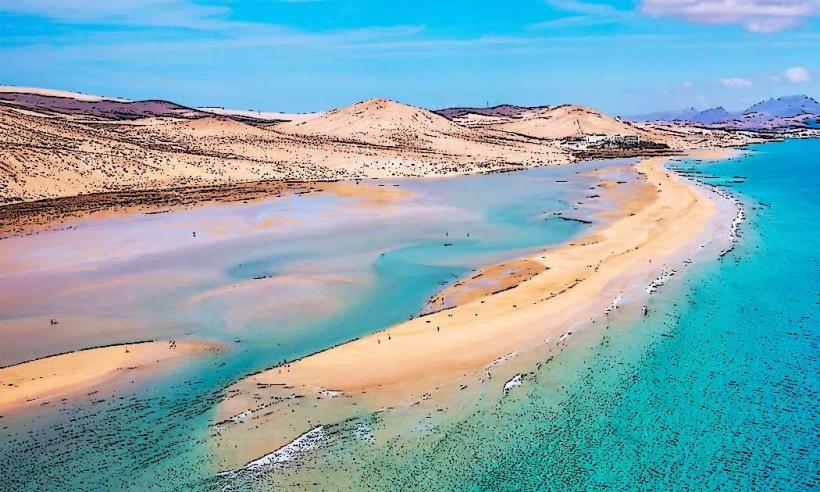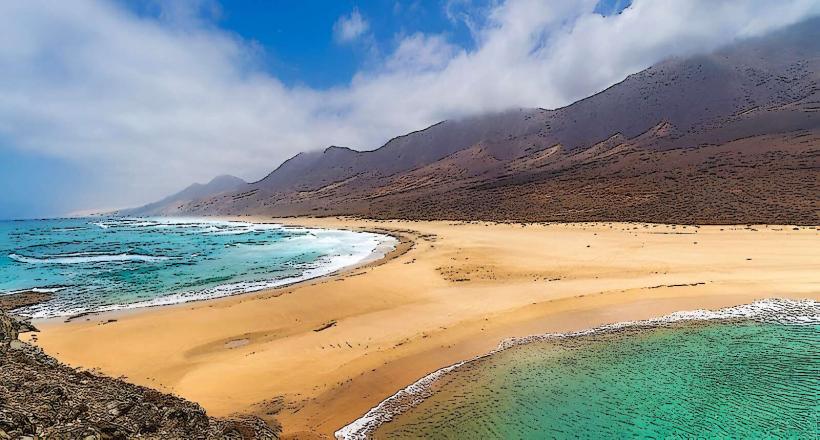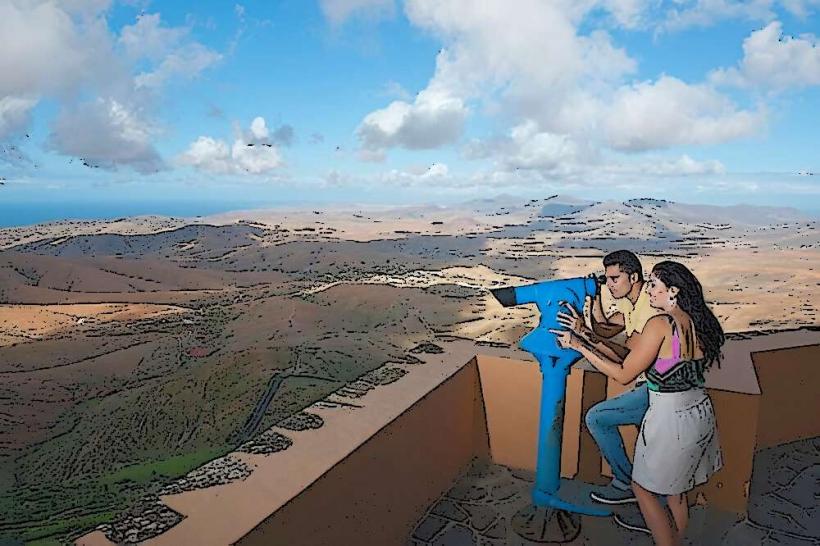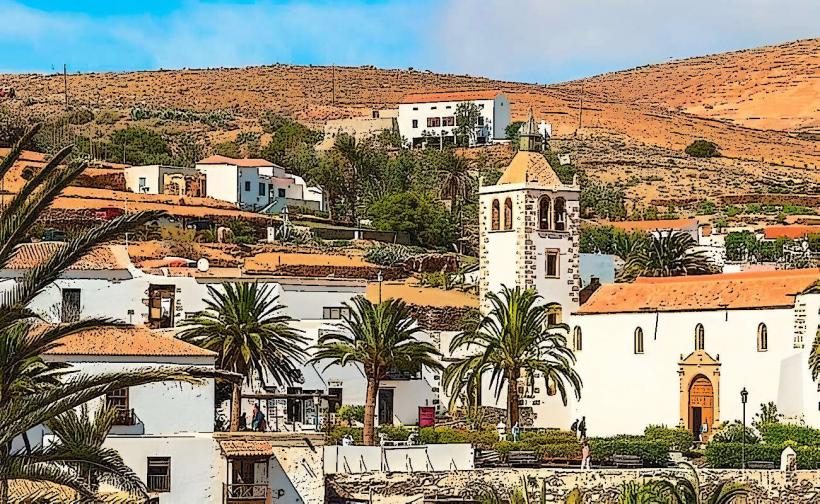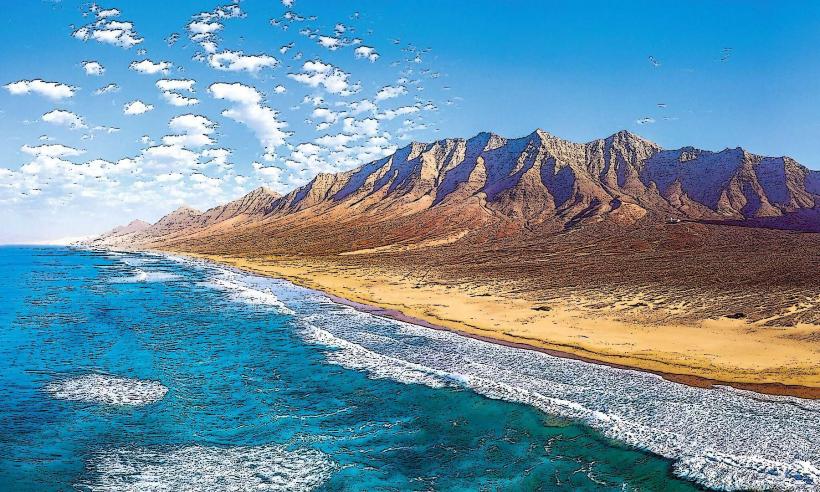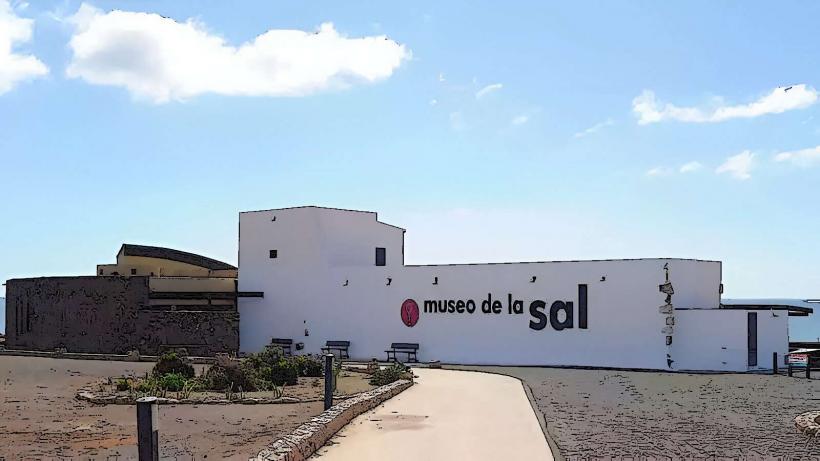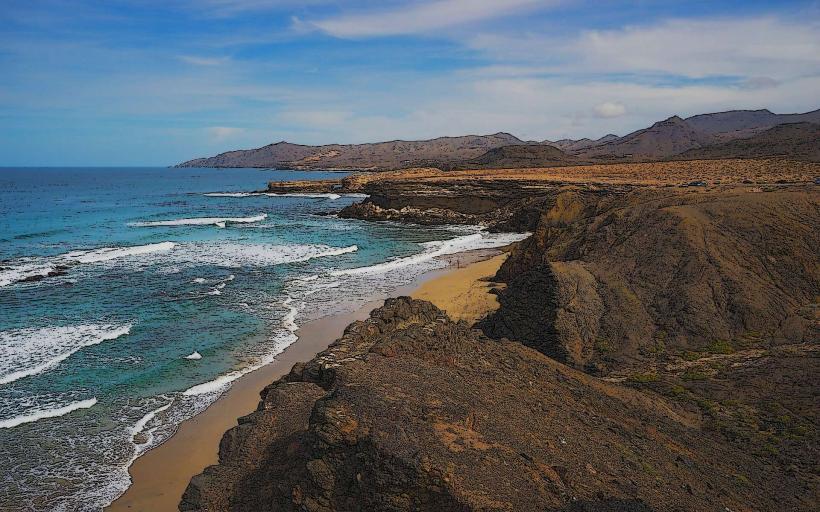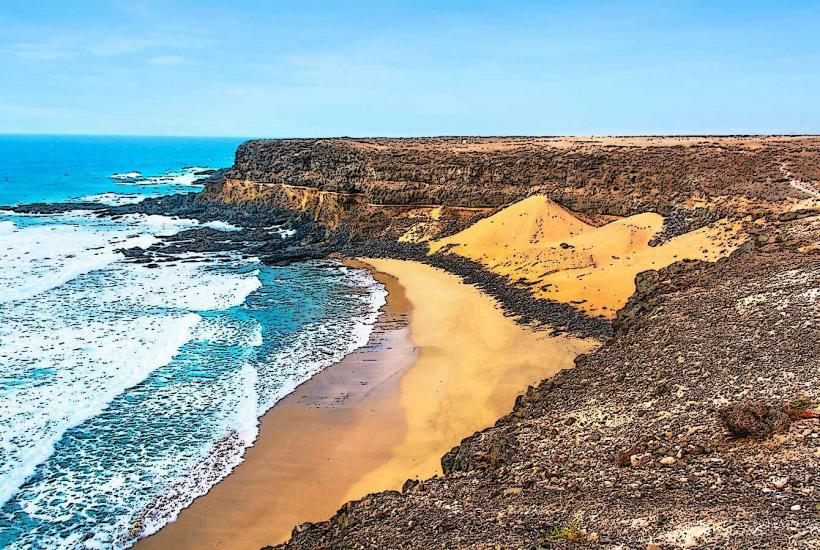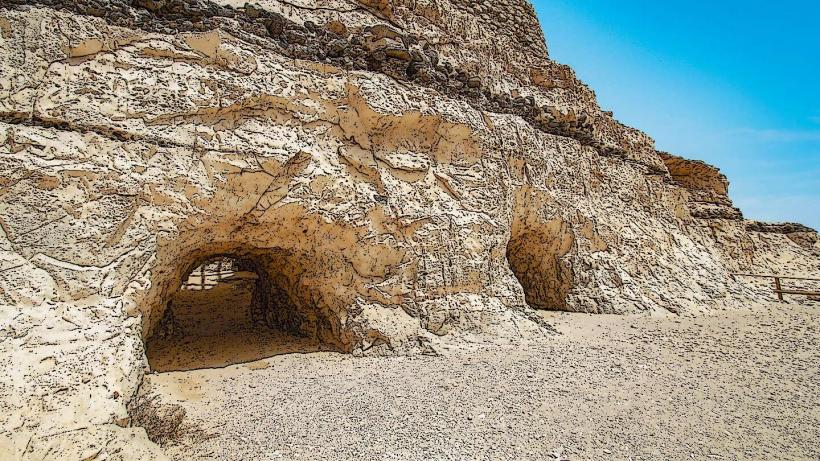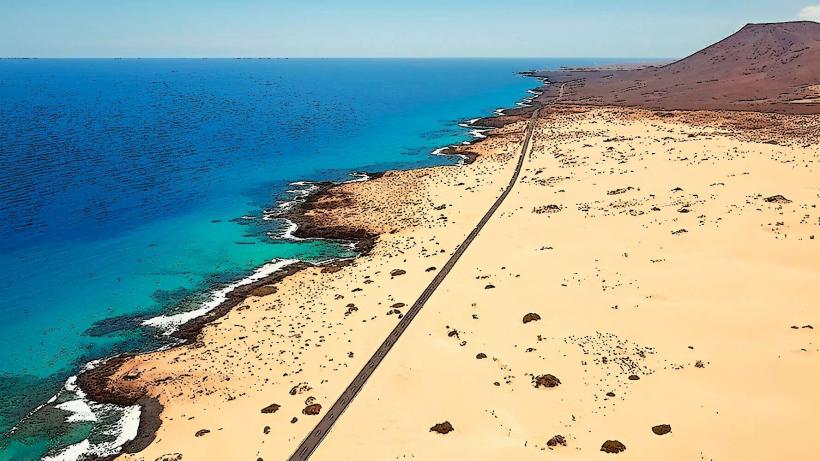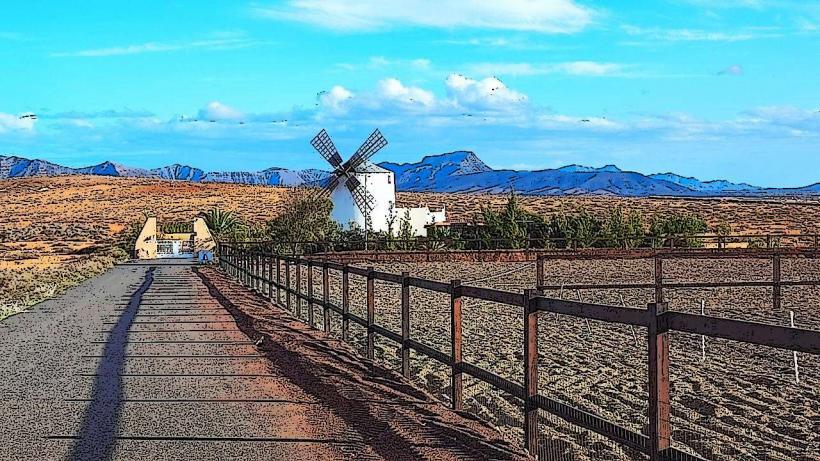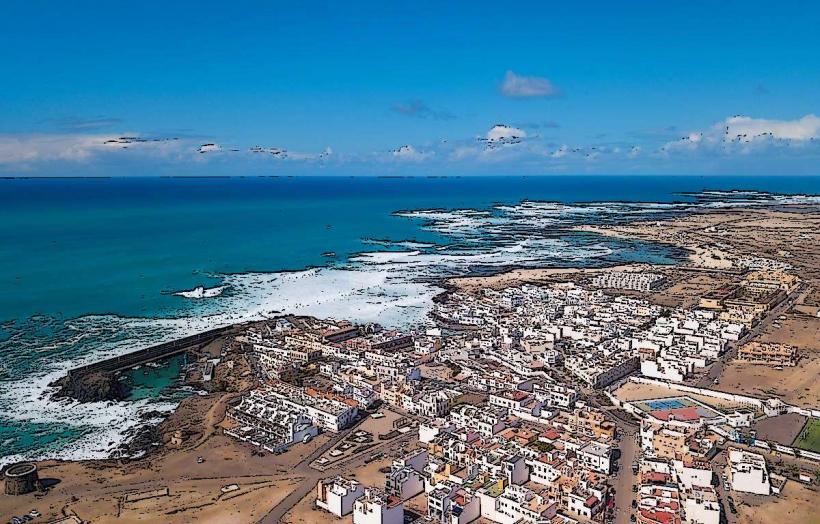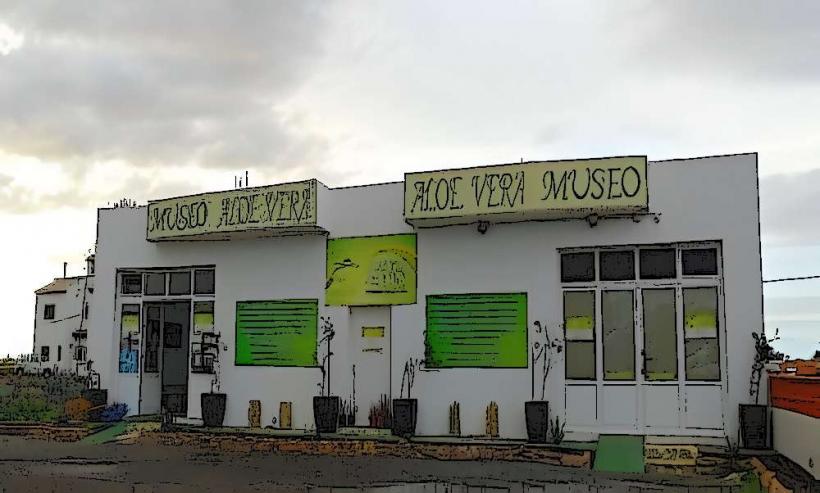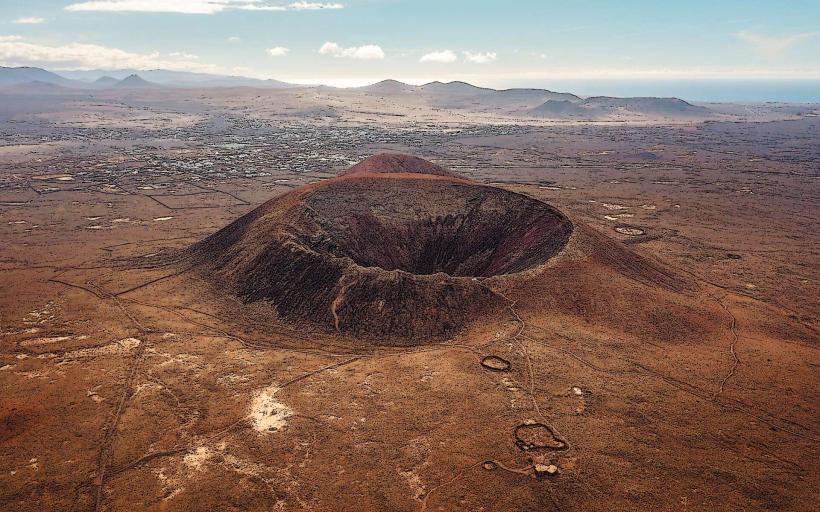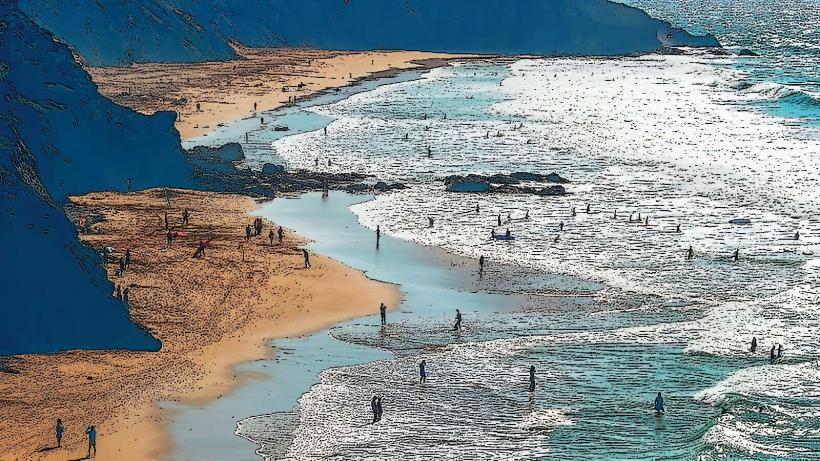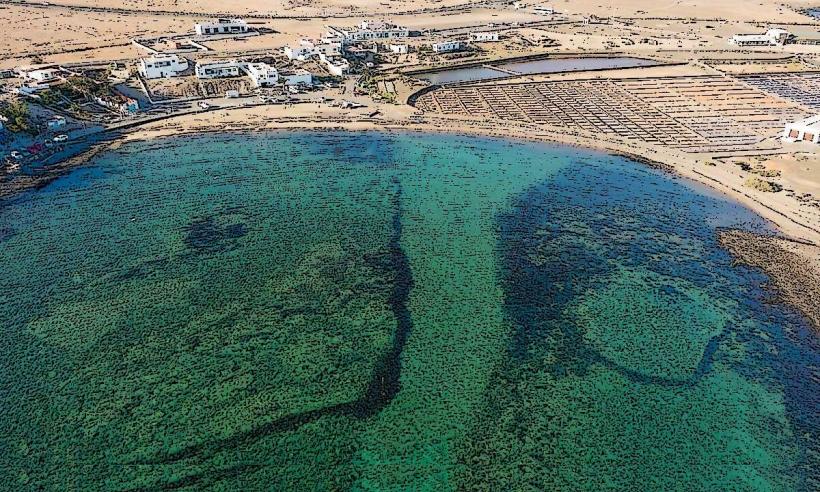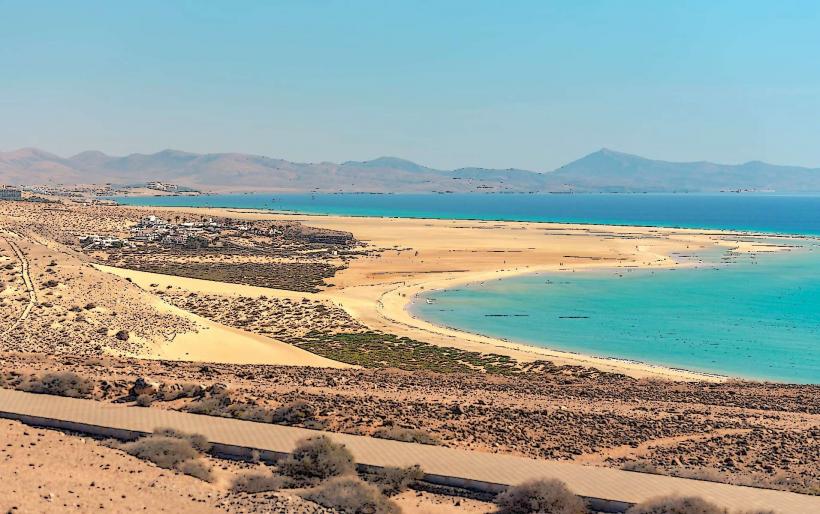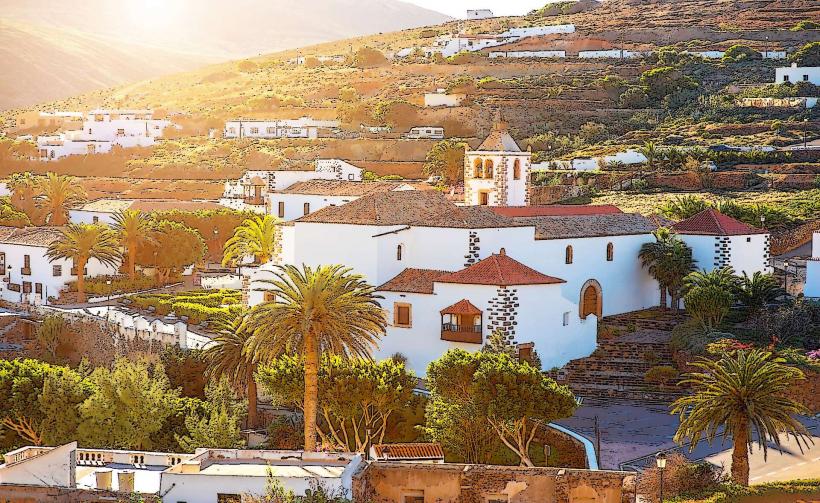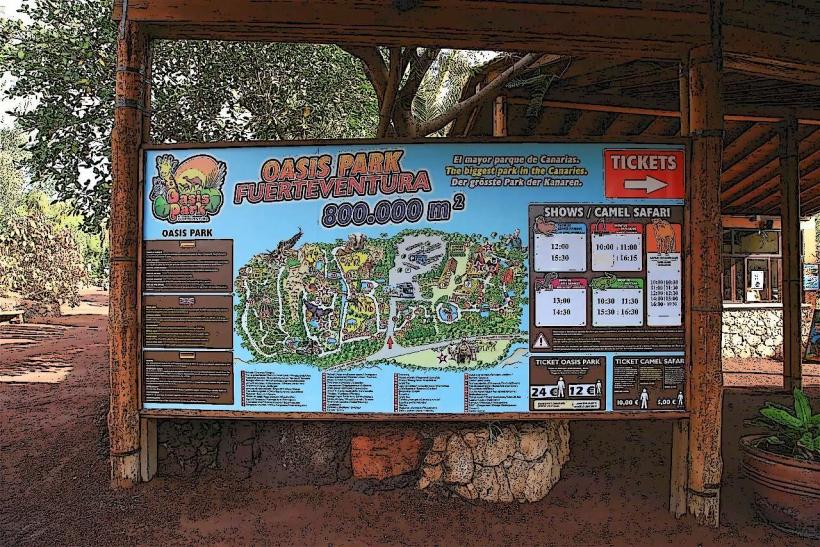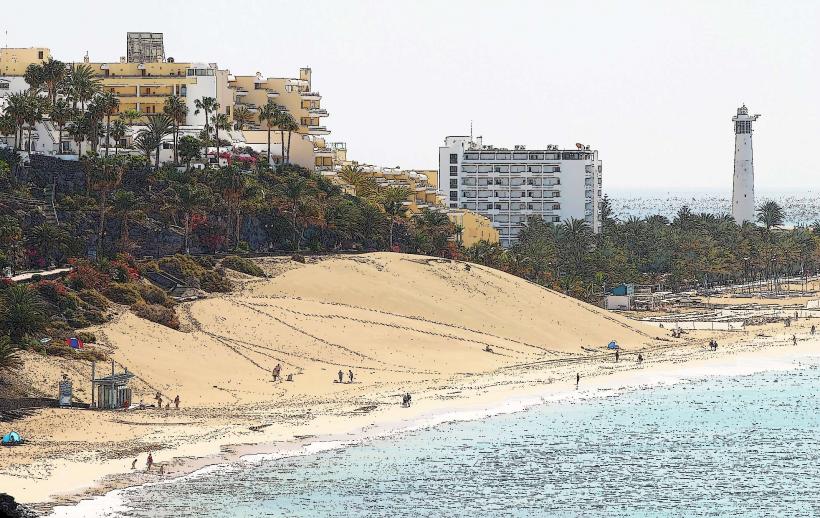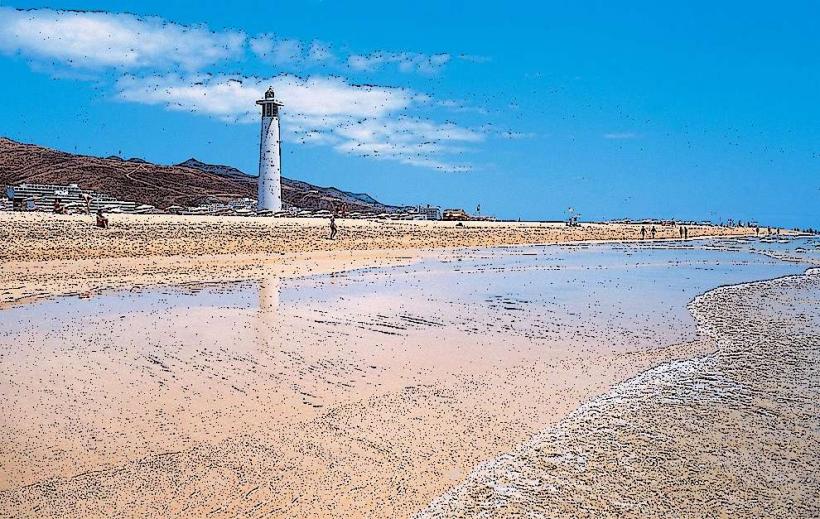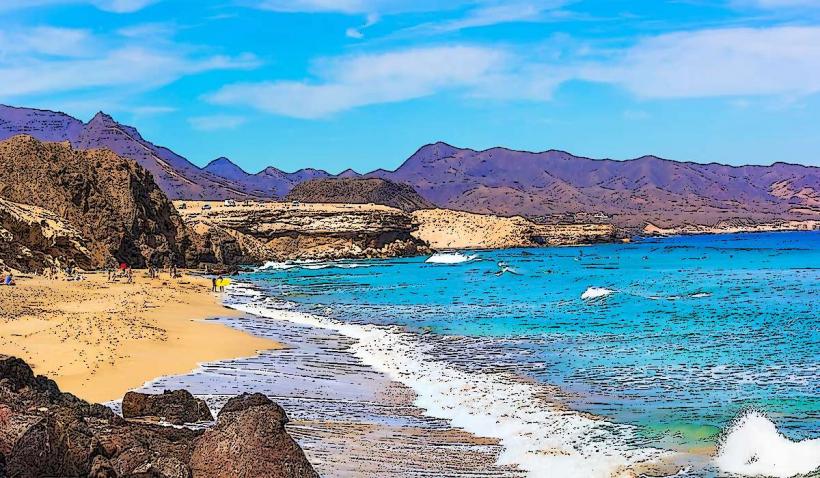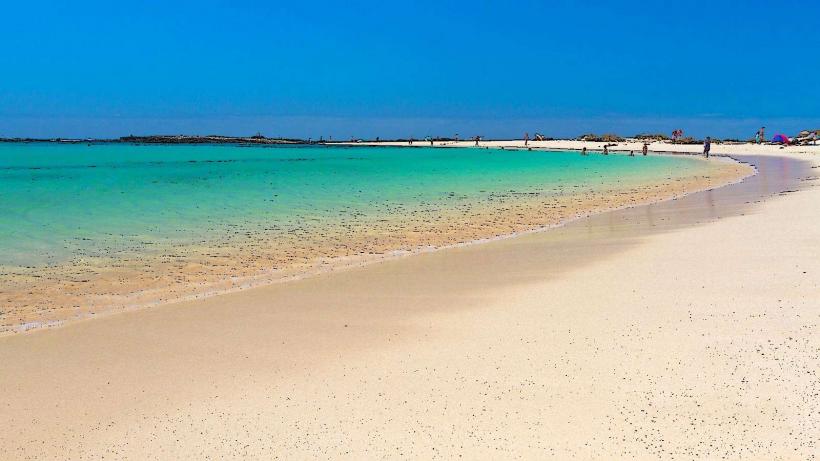Information
Landmark: Parque Natural de CorralejoCity: Fuerteventura
Country: Canary Islands
Continent: Europe
Parque Natural de Corralejo is a protected natural area located on the northeastern coast of Fuerteventura, one of the Canary Islands. This park is famous for its vast sand dunes, beautiful beaches, and unique volcanic landscapes. It is one of the most visited natural areas on the island and offers a mix of desert-like terrain, dramatic cliffs, and coastal scenery.
Here are some key details about Parque Natural de Corralejo:
Geography and Location:
- Location: The park is situated near the town of Corralejo, in the north of Fuerteventura. It is easily accessible from the resort areas on the island's northeastern coast.
- Area: The park covers around 26 square kilometers (10 square miles), with its main feature being the expansive sand dunes, which stretch from the coastal cliffs inland. It also includes a diverse range of habitats, such as rocky volcanic terrain, coastal areas, and salt flats.
Sand Dunes and Landscape:
- Sand Dunes (Dunas de Corralejo): The sand dunes are the defining feature of the park and one of the most iconic landscapes in Fuerteventura. They are formed by winds that carry sand from the ocean and deposit it along the coast, creating a vast, desert-like area. The dunes are constantly shifting and changing, creating dramatic patterns and adding to the area's ethereal beauty. The sand dunes are often compared to a mini Sahara due to their size and appearance.
- Beaches: The park is home to several beautiful beaches, with fine, white sand and clear turquoise waters. Playa de Corralejo and Playa del Duque are some of the most popular beaches, offering excellent spots for swimming, sunbathing, and water sports like windsurfing and kitesurfing. Some areas of the park are less accessible, ensuring their peaceful and unspoiled nature.
- Volcanic Terrain: Alongside the dunes, the park also features areas of volcanic rock, such as the Malpais de la Arena volcanic zone. The dark, jagged lava rock formations contrast sharply with the lighter-colored sand dunes and add to the park's diverse landscape.
Flora and Fauna:
- Vegetation: Despite its arid, desert-like appearance, the park supports a variety of plant species, especially in the more sheltered areas, such as small shrubs and low-growing vegetation. Species like Ceropegia fusca and Echium plantagineum are native to the region, and there are also some grasses and coastal plants.
- Wildlife: The park is home to a variety of bird species, including seabirds like waders, herons, and gulls, which can be found around the coastal areas and salt flats. The dunes themselves also provide habitat for smaller animals such as lizards, insects, and small rodents. Marine life, such as fish and sea turtles, can also be spotted in the waters around the park.
- Endemic Species: The park is an important habitat for some endemic species of plants and animals, many of which are adapted to the harsh, arid conditions of the region.
Activities:
- Hiking: The park offers several trails that allow visitors to explore the sand dunes, volcanic areas, and coastal cliffs. While the dunes themselves are more challenging to hike due to the shifting sands, the surrounding landscape provides ample opportunity for exploration and scenic walks.
- Water Sports: The area is famous for its strong winds and clear waters, making it a hotspot for water sports such as windsurfing, kitesurfing, and surfing. The beaches are also ideal for snorkeling, and the nearby waters are home to a variety of marine life.
- Relaxing and Sunbathing: Many visitors come to the park to relax on its beaches, enjoy the sun, and take in the serene environment. The natural dunes and clear waters create an idyllic setting for those looking to escape the busier tourist areas.
- Photography: The park is a popular location for photographers, thanks to its stunning landscapes, from the sweeping dunes to the coastal cliffs and the contrasting colors of the volcanic rocks and sand. Sunrise and sunset offer particularly picturesque scenes.
Cultural and Historical Significance:
- Archaeological Sites: Fuerteventura, and the park area in particular, has a rich archaeological heritage. Evidence of early human settlement has been found in the region, and there are several sites where ancient rock engravings and cave paintings can be seen. These prehistoric markings offer insight into the island's past inhabitants and their connection to the land.
- Historical Usage: The area around Corralejo has historically been used for agriculture, and some traditional farming practices can still be seen in the nearby areas, such as salt production from the coastal salt flats.
Conservation Efforts:
- Protected Area: Parque Natural de Corralejo is a protected natural area, which helps preserve the unique landscapes and biodiversity of the region. Its status as a protected park ensures that both the natural environment and cultural heritage are maintained for future generations.
- Sustainable Tourism: Efforts are made to ensure that tourism does not negatively impact the park's delicate ecosystems. This includes restrictions on certain activities within the park, such as off-road vehicles in certain areas and limitations on the number of visitors in sensitive zones.
Visitor Information:
- Access and Transportation: The park is easily accessible from Corralejo town, which is a popular base for visitors. It is also close to the main roads connecting the island, making it simple to visit by car. There are also some bus services that connect the town with the park’s key areas.
- Visitor Centers: There is a visitor center located near the park, where visitors can get maps, information about the park’s flora, fauna, and geology, and learn more about the park's conservation efforts.
Conclusion:
Parque Natural de Corralejo is a stunning natural area that offers a mix of breathtaking landscapes, from the vast sand dunes to the rocky volcanic terrain. The park’s diverse habitats, rich biodiversity, and recreational opportunities make it one of the top attractions on Fuerteventura. Whether you're into hiking, water sports, wildlife watching, or simply relaxing on beautiful beaches, the park provides a range of activities for nature lovers and outdoor enthusiasts. It is a must-visit destination for anyone looking to experience the unspoiled beauty of Fuerteventura.

